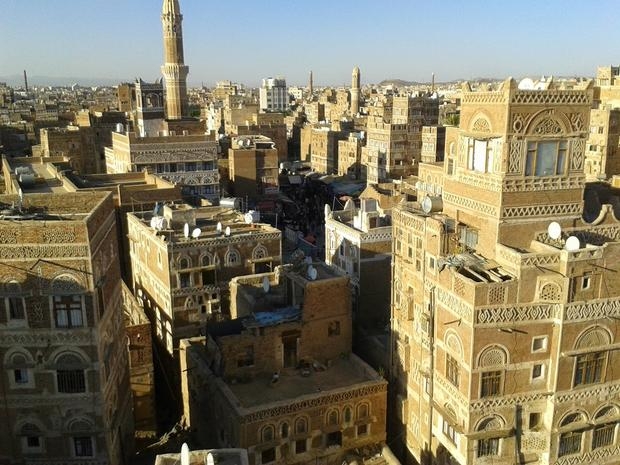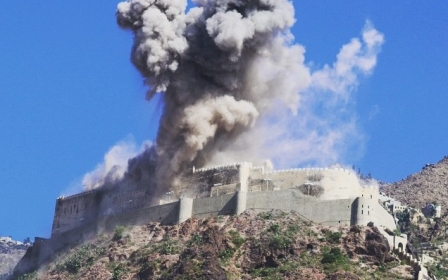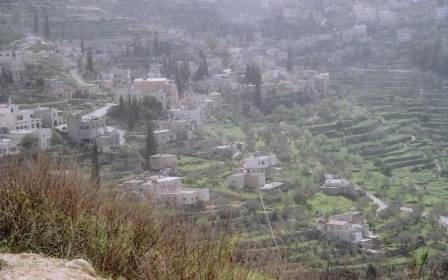UN laments ‘extreme times’ as two Arab sites join World Heritage List

NEW YORK - The UN’s culture agency, UNESCO, wrapped up its annual meet on protecting monuments on Wednesday by praising efforts to protect the Middle East’s treasures in the face of war, looting and relic destruction by religious zealots.
At talks in Bonn, the World Heritage Committee added 24 sites to its list of cherished global landmarks, including the Biblical baptism site "Bethany Beyond the Jordan" and millennia-old Bedouin rock etchings in the Hail region of Saudi Arabia.
But conservation gains in these two Arab countries occur against a grim backdrop of conflict, smuggling and the wanton demolition of ruins by the Islamic State (IS) group in Iraq and Syria that was also addressed by anxious archaeologists in the German city this month.
“It’s an extreme time,” Nada Al Hassan, head of the Arab unit for UNESCO’s heritage protection wing, told Middle East Eye. “We have had the news of destruction and intentional destruction nearly every day. It has been a hard year and it doesn’t seem like it will go better.”
Sites that previously won UN heritage status were demoted to a “danger list”. They were the Parthian Empire capital at Hatra, in Iraq, now overrun by IS militants, and the old Yemeni cities of Sanaa and Shibam, which are imperilled by civil war and a Saudi-led airstrike campaign.
The new Arab inscriptions now rank alongside such world-famous sites as the Great Wall of China and Vatican City, as well as natural wonders that have reached the UN’s high bar of “outstanding universal value”, such as the Serengeti National Park of Tanzania.
On the east bank of the River Jordan and north of the Dead Sea, the new Jordanian inscription, known as al-Maghtas in Arabic, is a Christian pilgrimage site of Roman and Byzantine ruins where Jesus is believed to have been dipped in water by John the Baptist.
The new Saudi inscription features petroglyphs of humans and animals that were hewn into rock faces by the Bedouin ancestors of modern Arabs in the wild sandy landscapes at the southern edge of the Great Narfoud Desert these past 10,000 years.
“It stands among the most fascinating and largest rock art sites of the world, and could be compared with the world-famous rock art sites of Australia, France, South Africa and the Saharan Desert in Morocco,” the UN’s culture agency said.
Other Middle East marvels joined the list, including Israel’s Necropolis of Beth She’arim and the Iranian sites of Susu, archaeological mounds and ruins, and the settlements and cave dwellings of semi-nomadic villagers in Iran's Maymand region.
Turkey celebrates two additions to the catalogue: the fortified city of Diyarbakir and its "fertile crescent" landscape, and the ancient ruins at Ephesus, site of the famous Temple of Artemis, one of the “Seven Wonders of the World”.
Faced with relic-destruction by militants as far apart as Iraq, Somalia, Syria and the Malian city of Timbuktu, UNESCO works with governments to stop the illegal smuggling of antiques and has launched a #Unite4Heritage campaign.
“It’s a campaign to create a counter-narrative against intentionally destroying heritage and is for uniting and respecting people and recognising their diversity,” Al Hassan told MEE. “You have conflicts, but you also have countries like Saudi Arabia, which invests in cultural heritage and every year presents new sites, which is rare in the Arab region.”
Including new inscriptions, the World Heritage List now boasts 1,031 sites in 163 countries that gain an international spotlight, more tourists and tougher monitoring rules. Committee members will meet next in Istanbul from 10-20 July 2016.
Middle East Eye propose une couverture et une analyse indépendantes et incomparables du Moyen-Orient, de l’Afrique du Nord et d’autres régions du monde. Pour en savoir plus sur la reprise de ce contenu et les frais qui s’appliquent, veuillez remplir ce formulaire [en anglais]. Pour en savoir plus sur MEE, cliquez ici [en anglais].




